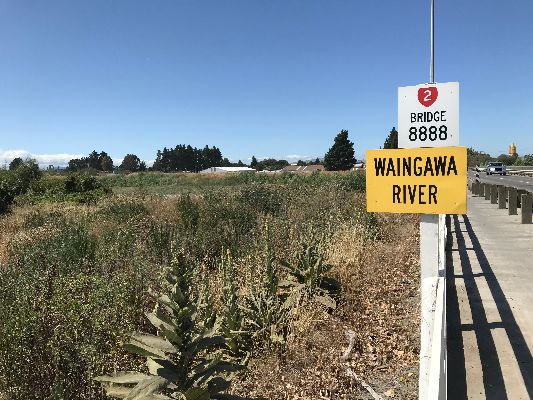
As the on/off water bans continue in Masterton, a national water body says the district’s infrastructure is still way below standard.
Masterton District Council [MDC] has asked residents to control their water use as the long dry summer goes on in Wairarapa.
The restrictions are dependent on the flow levels in the Waingawa river, one of the major triggers for restrictions to come in.
But the quality of the district’s water supply pipes has been again questioned.
MDC’s own water asset management plan rated more than 39 per cent of its network as “very poor”.
Its aim is to reduce that number by half over the next 10 years, according to its long-term plan.
The city council in Wellington has come under pressure for system faults which have caused problems across its water network.
Wellington’s councillors have placed the blame on crumbling infrastructure.
And Noel Roberts, technical manager of lobby group Water NZ, said Wellington is not unique.
He said aging water technology was a national issue.
“It’s in need of repair everywhere,” he said.
“We’re not aware of anywhere that has 100 per cent asset conditions, where they’re in an ideal state.
“Everyone could do with improvement.”
Roberts’ said Water NZ’s national performance review covers leakage rates and the amount of drinking water that does not get to the end user.
“Masterton has some challenges there,” he said.
“We look at 'I and I' – inflow and infiltration. That’s where rainwater gets into the network. 'I and I' is an indication of the integrity of the network.”
Roberts said international best practice aimed for below 15 per cent loss of water. The norm was about 18 to 23 per cent, he said.
In its own asset plans, MDC graded about 40 per cent of its water network as “very poor”
MDC used a national grading system for its plan, from 1 [very good] to 5 [very poor]. The district plans to reduce its grade 5 rated pipes from 40 per cent to 20 per cent of its total within 10 years.
And the new water metering project would confirm or dispel estimates of around 30 per cent of water in the district being lost through leakage, its assets manager David Hopman said.
He said the average age of pipes in the district was lower than the national average, and that the situation between Masterton and Wellington was not comparable.
“The network in Masterton is a gravity-fed system, designed to supply 25,000 people. The network in Wellington is much larger and, we understand, somewhat older.
“We are aware of inflow and infiltration into stormwater, and that is one of the issues renewals will address.”
Council chief executive Kath Ross said that Masterton’s water infrastructure “is quite different to that over the hill”.
“We have the ability to run an efficient and safe service with a mix of in-house people and contractors.”
The district’s plans are renewed as information and work progresses.
The current water ban has been in place since Friday [February 28].



 Gordon Campbell: On The Government’s Epic Fails In Jobs And Housing
Gordon Campbell: On The Government’s Epic Fails In Jobs And Housing Richard S. Ehrlich: The Billionaire Who Could Not Be Stopped
Richard S. Ehrlich: The Billionaire Who Could Not Be Stopped Martin LeFevre - Meditations: Relations Between Canada And America Are At Their Lowest Point Since The American Revolutionary War
Martin LeFevre - Meditations: Relations Between Canada And America Are At Their Lowest Point Since The American Revolutionary War Ramzy Baroud: The Great March Of Hope - Gaza’s Defiance Against Erasure
Ramzy Baroud: The Great March Of Hope - Gaza’s Defiance Against Erasure Ian Powell: More UK Lessons For Labour Party In New Zealand
Ian Powell: More UK Lessons For Labour Party In New Zealand Binoy Kampmark: Why Fly In Europe? The Dark Triumph Of The Ryanair Effect
Binoy Kampmark: Why Fly In Europe? The Dark Triumph Of The Ryanair Effect